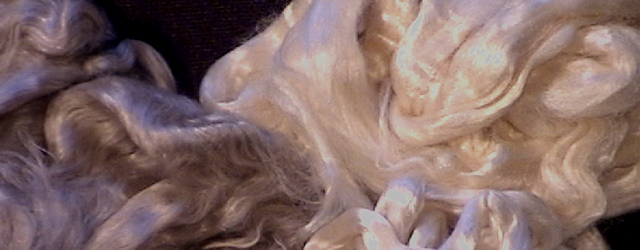Cashmere & Mulberry Silk, Tussah Silk, Cultivated Silk
Silk is an easy fiber to spin because of its long fibers. It has less elasticity than wool, but spins into a strong, smooth, and lustrous yarn.
Types of Silk
Bombyx Mori Silk is cultivated from a silk worm that lives naturally in the mulberry trees of China and the Far East. It is very white and soft.
Tussah Silk is the term used for wild silk from Asia. It usually has a color range of light to dark honey and beige. It is very suitable for handspinning, with a texture that is a little coarser than Bombyx Mori silk.
Characteristics
• Natural, Animal Fiber (Silk worm)
• Lightweight, Soft
• Thinnest of all natural fibers
• Luxurious
• Very durable
• Hand-washable or dry-cleanable
• Little static, no pilling
• Dyes well
• Blends extremely well with other fibers
Handspinning Silk
Spinning silk in the form of a combed top or brick is similar to the way you spin wool. Because the fibers are very slippery and long, a beginner will find it easier to spin from the fold, rather than spinning from the end. This will produce a very smooth, soft, and glossy yarn.
Carded slivers, rolag, of batts will spin well from the end. Silk that has been carded will produce a textured yarn with a matte finished.
A de-gummed bell cap can be spun easily by starting from the point of the cap.
Silk can be spun into very thin single threads, and as plied yarns. The yarn can be used for knitting, crocheting, and weaving projects.
End Uses For Silk
Silk is a very versatile fiber often used for knitted and woven projects for making apparel such as, dresses, blouses, skirts, jackets, pants, pants, scarves, and ties. The softer silks are also ideal for making baby items, and next-to-the-skin garments.
{{CODEsilk}}



